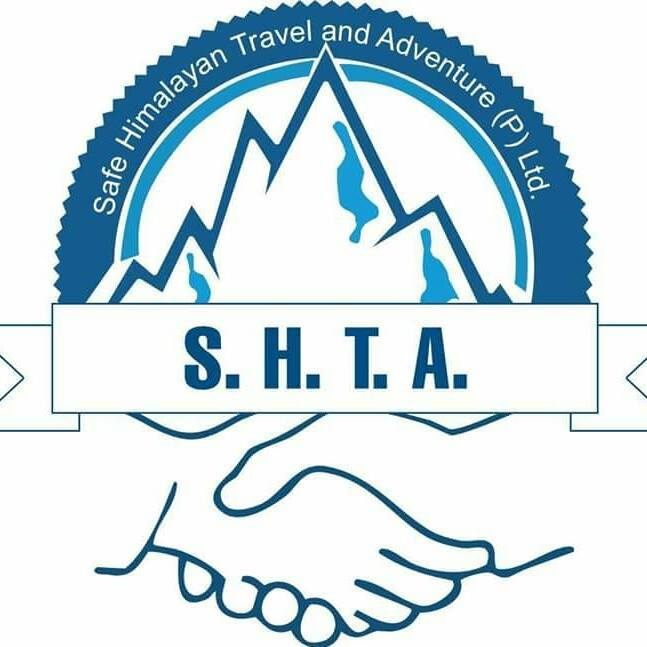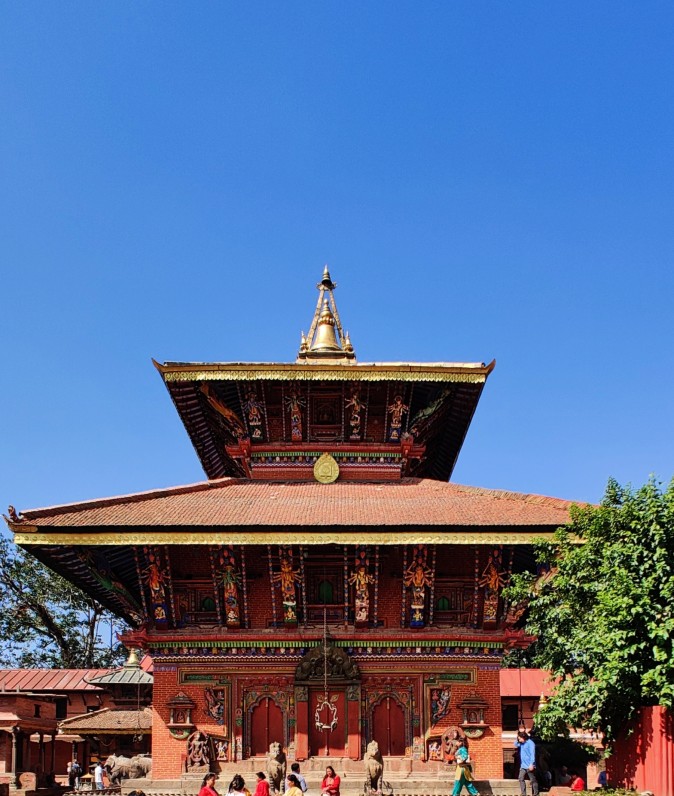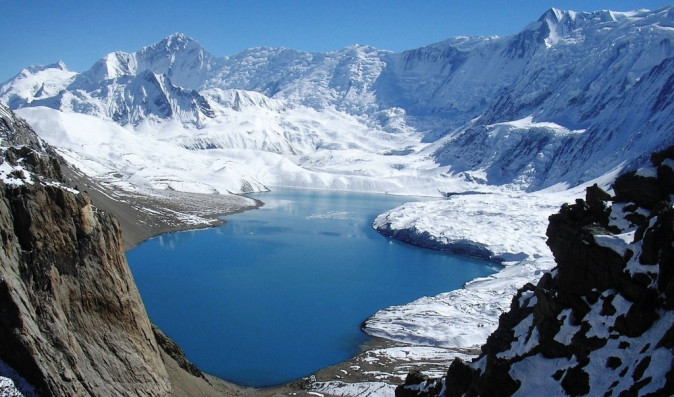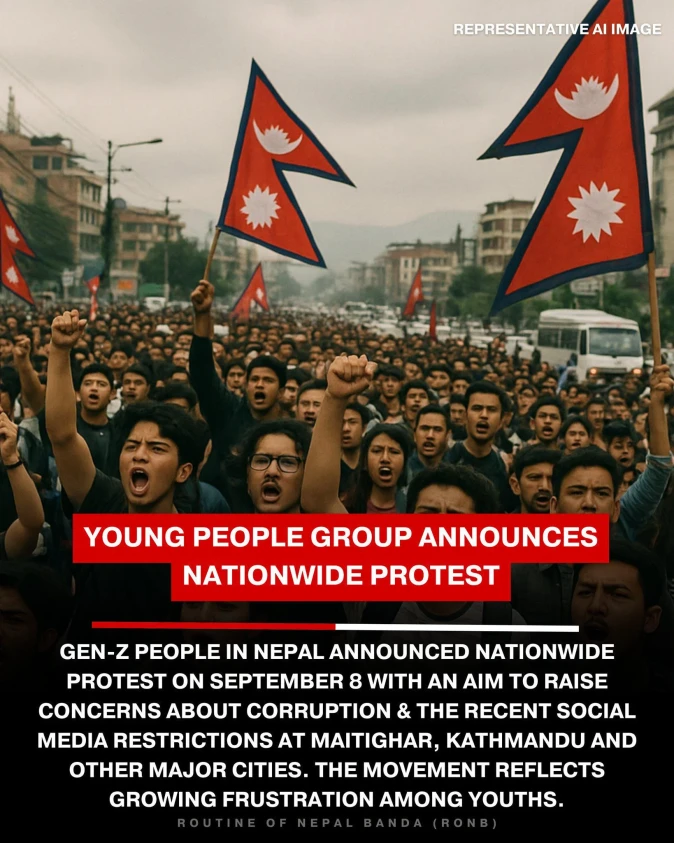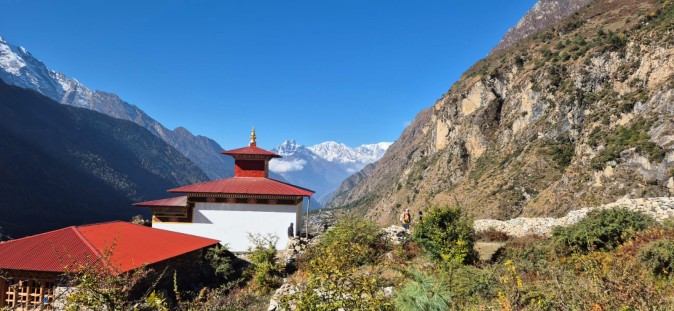Kathmandu, Nepal
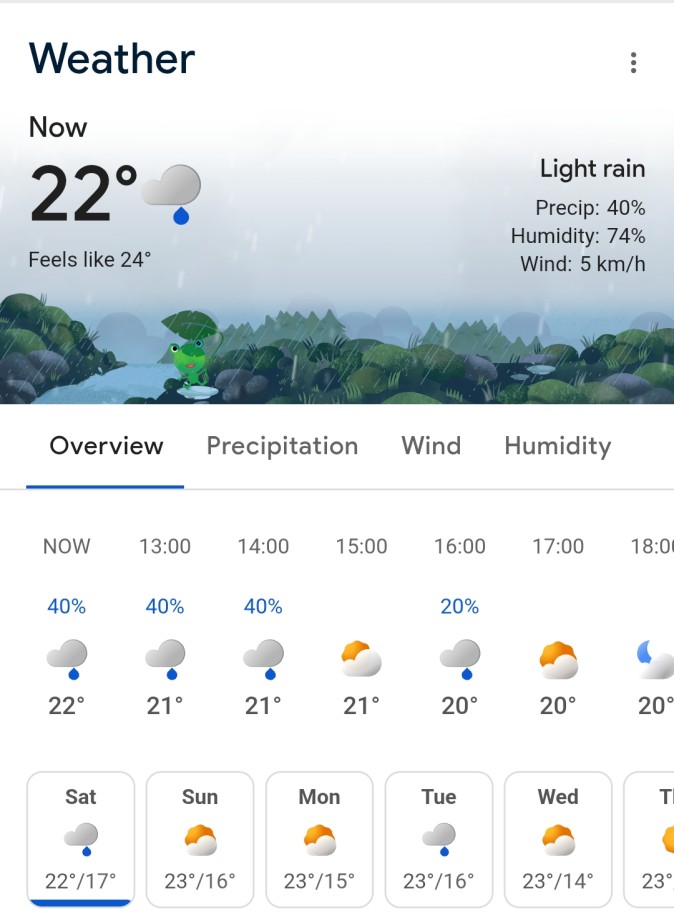
Currently 66° · Drizzle
Kathmandu, Nepal


12 PM |
71° |
Cloudy |

1 PM |
73° |
Thunderstorms |

2 PM |
76° |
Thunderstorms |

3 PM |
74° |
Cloudy |

4 PM |
72° |
Mostly cloudy |

5 PM |
70° |
Intermittent clouds |

6 PM |
67° |
Intermittent clouds |

7 PM |
67° |
Intermittent clouds |
|
Show more |
Current Conditions
Based on the latest forecast for Kathmandu:
-
It's drizzling right now with a temperature around 19 °C (66 °F) at lower elevation.
-
Through the afternoon, skies will become cloudy, with the possibility of thunderstorms around ~1:00-2:00 pm and temperatures climbing to about 23-24 °C (73-76 °F).
-
Evening brings intermittent clouds, then mostly clouded skies with temperatures dropping back toward 18-20 °C.
So in short: warmish, humid, increasing cloud cover, chance of thunderstorms, especially later in the day.
What This Means for Mountain Trekking in Nepal
Trekking in the Himalayas involves many altitude zones, different terrain, remote trails, and variable weather. Below are key implications given the current kind of conditions (and what to expect if you head higher).
1. Trail & Terrain Conditions
-
With showers or drizzle (especially afternoon/thunderstorms) plus warm temps → lower and mid-altitude trails (forested, steep, muddy) can become slippery.
-
If thunderstorms occur, there’s risk of heavy downpours and possibly surface water flows, especially where trails cross slopes or ridges.
-
At higher altitudes, although the precipitation may be lower, the cloud cover and moisture still impact conditions: trails could be damp, visibility reduced, and footing unstable.
2. Visibility & Mountain Views
-
The cloud cover and possible storms mean that mountain vistas may be obscured. Many trekkers trek for the dramatic snow-capped peaks and wide panoramas; when clouds or mist hang low, that view is limited.
-
At higher elevations, you might get sudden clearing after a storm, but you should not count on consistently good visibility in this weather cycle.
3. Weather Timing & Planning
-
Since thunderstorms are forecast for early afternoon (~1-2 pm), it’s wise to plan your trekking schedule to do major movements in the morning, when skies are likely clearer and weather more stable.
-
Afternoon / evening: higher risk of storms, clouds, so it is less ideal for ridge walks or exposed terrain later in the day.
-
Build in buffer time: delays due to weather, slower progress on wet terrain, or detours might be needed.
4. Gear & Safety Considerations
-
Waterproof / water-resistant outer layer and good boots with adequate grip are important given the drizzly, cloudy, humid conditions.
-
Trekking poles help with stability when trails get slippery.
-
At higher altitudes, even if it’s warm at lower level, be prepared for rapid weather changes, and carry warm layers, wind protection.
-
If thunderstorms occur, avoid exposed ridges or high ridgelines during thunder-storm risk (lightning hazard).
-
Because the lower altitudes are humid and damp, insect / leech activity may increase (forest zones) and gear drying may be slower.
5. Altitude & Weather Zones
-
Conditions in Kathmandu (~1300 m) reflect lower-to-mid altitude. As you go higher (3000-5000 m+), the weather can be very different: colder nights, greater wind, lower oxygen, more direct exposure.
-
Trails at high elevations may receive less precipitation depending on weather patterns, but cloud cover and rapid weather shifts remain serious factors.
-
Some routes (especially in “rain-shadow” areas) may be less affected by heavy rain, though still impacted by cloud, wind, cold.
6. Choosing the Right Route for Current Weather
-
If the weather is unstable (clouds, thunderstorms forecast) and you’re not very experienced, you may prefer a route with less exposure, more forest cover (which provides some shelter), lodging options, and moderate altitudes.
-
For more challenging or high-altitude treks (passes, ridgelines) you’ll want to be especially careful about timing, weather windows, and local advice / guide support.
My Verdict & Recommendation
Given the current conditions in the Kathmandu region (drizzle, cloudy afternoon with possible storms, warm/humid lower altitude), if you’re planning a trek soon:
-
Yes, you can trek — many trails near Kathmandu / mid-hills will be accessible.
-
But: expect slower pace, damp-trail conditions, possible afternoon storms, and reduced panoramic views.
-
For a more comfortable experience, aim to start early in the day, plan for weather delays, and pick a trail with good lodging and infrastructure rather than remote/very high pass terrain.
-
If you’re aiming for high passes or exposed ridges, check local forecasts, consult with guides, possibly postpone if bad weather risk is high.
Here’s a detailed look at current weather conditions and what they mean for trekking on three popular Nepal routes. The forecasts are for today and the immediate future. Use them to assess whether to trek, adjust your plans, or take extra precautions.
1. Annapurna Region
Currently 48° · Mostly sunny
Annapurna, Nepal


1 PM |
49° |
Partly sunny |

2 PM |
50° |
Partly sunny |

3 PM |
52° |
Partly sunny |

4 PM |
49° |
Partly sunny |

5 PM |
47° |
Mostly sunny |

6 PM |
45° |
Mostly clear |

7 PM |
42° |
Mostly clear |

8 PM |
42° |
Mostly clear |
|
Show more |
Current / Forecast
-
Right now: ~ 9 °C (48 °F) during the day.
-
Through the afternoon: warming slightly to ~10–11 °C (50–52 °F) then dropping in the evening to ~ 5 °C (42 °F) and later ~ 1–3 °C.
-
Conditions: Mostly sunny for now.
Implications for Trekking
-
The lower temperatures—even during the day—mean you’ll need warm layers, especially if you’re ascending above 2,500–3,000 m.
-
The fact that it is mostly sunny is good for visibility, but the dropping temperatures mean nights will be cold; stays in lodges may feel quite chilly.
-
If you’re heading toward higher altitudes (e.g., passes or base camp areas), expect even colder conditions and possibly snow cover or frost. In fact, recent reports say the Annapurna region has seen fresh snowfall across higher trekking routes. thetourismtimes.com
-
Best strategy: schedule major movements in the daylight, rest early, ensure you have good insulation for evenings & early mornings, and check with local guides about route conditions (especially if snow has fallen).
Recommendation
If you’re trekking in Annapurna right now, you can, but plan for colder than you might expect, and factor in the possibility of snow or icy trail sections if altitude rises significantly. Choose a route that offers good lodging each night, so you’re not exposed to harsh night cold or uncertain shelter.
2. Langtang Region
Currently 48° · Clouds and sun
Langtang, Nepal


1 PM |
49° |
Mostly cloudy w/ showers |

2 PM |
48° |
Mostly cloudy w/ showers |

3 PM |
47° |
Intermittent clouds |

4 PM |
45° |
Intermittent clouds |

5 PM |
44° |
Partly sunny |

6 PM |
42° |
Partly cloudy |

7 PM |
39° |
Partly cloudy |

8 PM |
38° |
Partly cloudy |
|
Show more |
Current / Forecast
-
Now: ~ 9 °C (48 °F) at the relevant altitude.
-
Afternoon: chance of showers, mostly cloudy conditions ~10 °C (49 °F).
-
Evening through night: dropping to ~6 °C (44 °F), then ~4–5 °C (39–42 °F) and further down to ~3–2 °C (38–35 °F).
Implications for Trekking
-
Showers are forecast in the afternoon—which means trail surfaces may become slick, especially forested or ridge areas.
-
Cloud cover and showers reduce visibility; if you’re trekking primarily for views, they may be limited.
-
Night temps are dropping closer to freezing—if you sleep at higher altitudes or in simpler lodges, make sure you have cold-weather gear (warm sleeping bag, down jacket, etc.).
-
Because of the weather risk, it’s wise to plan for shorter daily legs (so you’re at your lodging by early afternoon), and avoid attempting big altitude gains in the late afternoon when conditions deteriorate.
Recommendation
Langtang right now is doable but less comfortable than ideal: the potential for showers and dropping temps means greater caution. If you’re less experienced, pick a route with more shelter, fewer exposed ridges, and good access to lodges. Check local weather and trail condition updates.
3. Mount Everest Region (Khumbu / EBC)
Currently 46° · Cloudy
Mount Everest


3 PM |
48° |
Partly sunny |

4 PM |
50° |
Mostly sunny |

5 PM |
51° |
Mostly sunny |

6 PM |
50° |
Sunny |

7 PM |
48° |
Sunny |

8 PM |
46° |
Clear |

9 PM |
43° |
Clear |

10 PM |
41° |
Clear |
|
Show more |
Current / Forecast
-
Current temp: ~ 8 °C (46 °F).
-
Afternoon into early evening: warming slightly to ~9–10 °C (48–50 °F), then clear skies later.
-
Night: dropping to ~5–6 °C (41–43 °F) and further down later (~1–3 °C).
Implications for Trekking
-
At these altitudes, even a daytime temp of ~10 °C can feel cold given wind chill and exposure.
-
Clear skies in later afternoon and night are a plus for views and for planning an early next-day move. But cold nights demand good gear.
-
Because the region is at higher altitude, weather can change rapidly—what is predicted to be clear could shift. Also, the best time for clear views is typically early morning, so plan to be above tree line or at viewpoint early. Ian Taylor Trekking+1
-
Given the cold night, you’ll want to stay in well-heated lodges (if possible), get up early, and carry extra insulation.
Recommendation
If you’re going into the Everest region now, you’re entering serious trekking territory: high altitude + cold nights + potential rapid weather change. Make sure you’re well-acclimatised, have the right equipment, and allow rest days for altitude adjustment. It is possible, but requires strong preparation.
Overall Verdict & Tips
-
Yes, trekking is still possible across all three regions, but the conditions are tougher than optimal: colder temperatures, potential precipitation (especially in Langtang), and the need for good gear and planning.
-
Since we’re approaching post-autumn / early winter conditions, trail conditions may change fast (snow, icy patches, frozen ground).
-
General trekking tips given these conditions:
-
Start hikes early in the day to avoid afternoon weather deterioration.
-
Stay at lodges with heating or good insulation; carry a warm sleeping bag and thermal layers.
-
Bring waterproof outer gear (jacket, shell) and be ready for wet trails.
-
Monitor altitude gains carefully—fatigue + cold + altitude = higher risk.
-
Have a contingency plan (shorter route, extra rest day) in case weather worsens.
-
Keep updated with local forecasts (from Department of Hydrology and Meteorology Nepal or guides) and check trail condition reports for high passes or remote areas.
-
3-day forecasts (summary)
-
Annapurna region: Partly sunny, daytime highs ~11–14°C, nights down to about −2°C.
-
Langtang region: Mix of clouds and sun with brief afternoon showers possible; highs ~10–11°C, lows around 0 to −2°C.
-
Everest / Khumbu region (EBC): Partial sun now, nights well below freezing (lows ~ −4 to −6°C), daytime highs ~9–12°C.
-
Kathmandu (base/approach): Warm and humid with showers/thunderstorm chances mainly early, highs ~24–25°C. Good to expect wet lower-elevation approaches.
What this means — practical, route-by-route advice
Annapurna (Annapurna Circuit, Ghorepani, ABC)
-
Main risk: cold nights and potential frost/snow at higher passes (Thorong La ~5416 m) because forecast lows near −2°C at local/regional gauge — higher altitudes will be colder and may already have fresh snow. Plan for icy trail sections early morning.
-
Action: Do big walking legs early morning (before sun softens icy patches), carry microspikes/crampons if you will cross high passes, warm sleeping bag (rated to at least −10°C if camping or thin lodge), and permit extra acclimatization days if you have elevation gain >1,000 m/day.
Langtang (Langtang Valley, Kyanjin Gompa)
-
Main risk: Afternoon showers and damp, slippery trails; visibility may be reduced some afternoons. Night lows approaching freezing—cold shelters.
-
Action: Plan short daily legs so you reach tea-houses by early afternoon. Waterproof boots and a breathable rain-shell are essential. Trekking poles help on muddy/steep trail. If you’re inexperienced, prefer valley routes (less exposed) over exposed ridgelines during this window.
Everest / Khumbu (Lukla → EBC)
-
Main risk: Nights are well below freezing; combined with the altitude this increases dehydration and cold-injury risk. Daytime can be pleasant but wind chill on ridges is strong.
-
Action: Emphasize acclimatization (rest days at Namche or Dingboche), good down insulation for nights, and plan summit/pass attempts (if any) only during clear, calm morning windows. Keep an eye on wind forecasts — strong winds raise objective risk more than temperature alone.
Cross-region considerations (applies to all treks)
-
Start early in the day. Afternoon is when showers/clouds/thunderstorms are likeliest in the lower hills (Kathmandu approaches) and when visibility drops.
-
Expect large temperature swings with altitude. Kathmandu warm/humid; higher elevations much colder and often below freezing at night. Pack layers (base, mid, shell), warm hat, gloves, and a sleeping bag with adequate rating.
-
Trail choice: If weather is unstable or you want an easier trip, pick routes with good lodge infrastructure and lower exposure (some sections of Annapurna Foothills, lower Langtang valley) rather than long exposed passes.
-
Safety gear: waterproof shell, gaiters, trekking poles, headlamp, spare insulation, and a simple first-aid kit. If crossing high passes, bring traction aids (microspikes) and check for avalanche/ice risk locally.
-
Local checks: Always confirm with local guides, lodges, or the Department of Hydrology & Meteorology Nepal before heading over high passes — forecasts can shift.
Quick 48-hour checklist (what to do now)
-
Check your route’s highest overnight altitude and compare to forecast low (if forecast low is ≤0°C, expect frozen conditions above ~3,000–3,500 m).
-
Pack: waterproof shell, warm down jacket, insulated sleeping bag (comfort well below expected night temps), microspikes, poles.
-
Schedule: Most walking before noon; aim to be at lodging by early afternoon.
-
Contingency: Plan alternate lower-altitude exit routes and allow an extra rest day for acclimatization or weather delays.
-
Inform someone of your daily plan and check in each evening.
🌄 Conclusion
Overall, with the right gear and an early start each day, November remains one of the best months for mountain trekking in Nepal — rewarding adventurers with breathtaking views of the snow-capped Himalayas and unforgettable high-altitude experiences.
✅ Plan Your Trek with Safe Himalayan Travel & Adventure
At Safe Himalayan Travel & Adventure, we specialize in customized trekking experiences that combine safety, comfort, and local expertise. Our guides ensure that you are well-prepared for changing weather, with the right gear, acclimatization schedules, and daily support to make your trek safe and unforgettable.
📞 Book your trek today and experience Nepal at its most spectacular this November!
